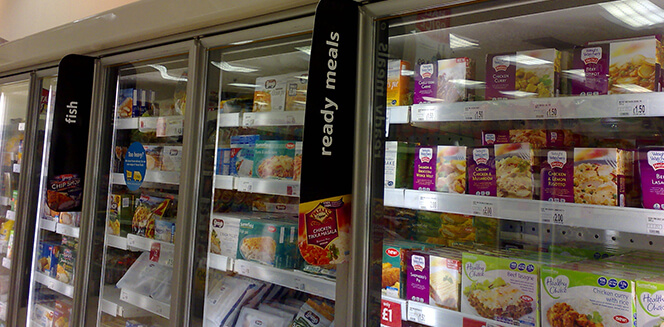Frozen Food to Gain Traction Among Business Customers & Retail End-Consumers

1 Oct
2015
The frozen foods industry seems to have changed customers’ negative perception about the market and to a great extent. A major part of world population in various regions such as North America and Europe show affinity towards the consumption of frozen foods of some kind: the major of them consist of frozen ready-to-eat meals, fruits and vegetables, meat and poultry, sea food and soups. A majority of them-retail end-users and business customers–consume them more than once a week, followed by the segment that consume them eat every day or at least once a week.
The market seems to be booming. World over, cold food manufacturers have actively involved by building and expanding the storage capacity, developing new products and extensively promoting them; this has offered increased impetus to the growth of the market. As per a recent report by Allied Market Research titled “World Frozen Food Market - Opportunities and Forecasts, 2014 – 2020”, the market would garner a revenue of $306 billion by 2020, growing at a CAGR of 4.1% during the 2015–2020 forecast period.
Market Growth Strategies
The market demand is primarily driven by consumption of frozen foods in the developing economies such as India, China among other Asian countries along with changing food habits across these regions. Opening of massive retail chains such as hypermarkets and supermarkets across developing economies that promote frozen foods have fostered the market demand in these regions. Lack of efficient refrigeration facility in these retail stores and inadequate distribution supply chains in rural areas as well as semi-urban areas are the key challenges faced by market players in developing markets. The market in developed economies would witness moderate growth, with a large percentage of population preferring adopting healthy foods. Meanwhile cold food manufacturers are expanding their presence by adding to their already existing processing and packaging facilities or collaborating with chefs or finding other innovative ways to consolidate their market positions.
Futures Trends
The Asia – Pacific region is now the most promising geography, when it comes to frozen food market. There has been a dramatic shift from low value food processing in a highly scattered segment to provide technology- driven and branded packaged items. Owing to this change, the prominent players are busy launching new foods in different categories and exploring both international and local markets.
Market Forecasts
North America and Europe combined account for about 72% of the total market revenue, largely driven by developments in food service industry. However, developing economies would witness a higher growth rate over the forecast period. The regions such as Asia Pacific and LAMEA, combined, would account for about 35% of the global frozen food sales by the year 2020, the market is largely driven by increasing adoption of cooked and semi-cooked foods, bakery and desserts in retail chains.

Akhilesh Prabhugaonkar
Author's Bio- Akhilesh Prabhugaonkar holds a bachelor’s degree in Electronics Engineering from the reputed Vishwakarma Institute of Technology. He has a special interest in the fields of forensics, world history, international relations and foreign policy, sports, agriculture, astronomy, security, and oceanography. An ardent bibliophile and melophile, Akhilesh loves to write on topics of his interest and various other societal issues. This love for writing made him enter the professional world of content writing and pursue his career in this direction.
Avenue: Entire Library membership of Allied Market Research Reports at your disposal
- Avenue is an innovative subscription-based online report database.
- Avail an online access to the entire library of syndicated reports on more than 2,000 niche industries and company profiles on more than 12,000 firms across 11 domains.
- A cost-effective model tailored for entrepreneurs, investors, and students & researchers at universities.
- Request customizations, suggest new reports, and avail analyst support as per your requirements.
- Get an access to the library of reports at any time from any device and anywhere.
Related Post
-
Cash in Transit: How Advanced Telematics Improves the Security of Financial Service Businesses?
-
How Are Space Companies Reacting to the Growing Importance of Space Debris Monitoring and Removal?
-
How Is Integration of Teleradiology in Healthcare Businesses a Profitable Decision?
-
Revolutionary Technologies That Optimize the Potential of Minibus Businesses
-
Why Apparel Businesses Heavily Invest in Online Clothing Rental Services?
-
Herbal Tea: Why Is the Adoption of Sustainable Extraction and Packaging Techniques on the Rise?








